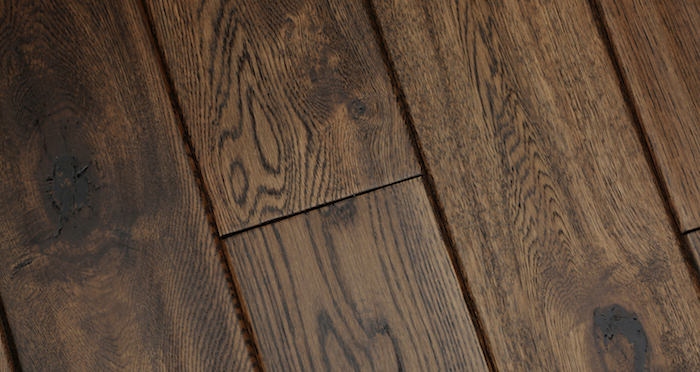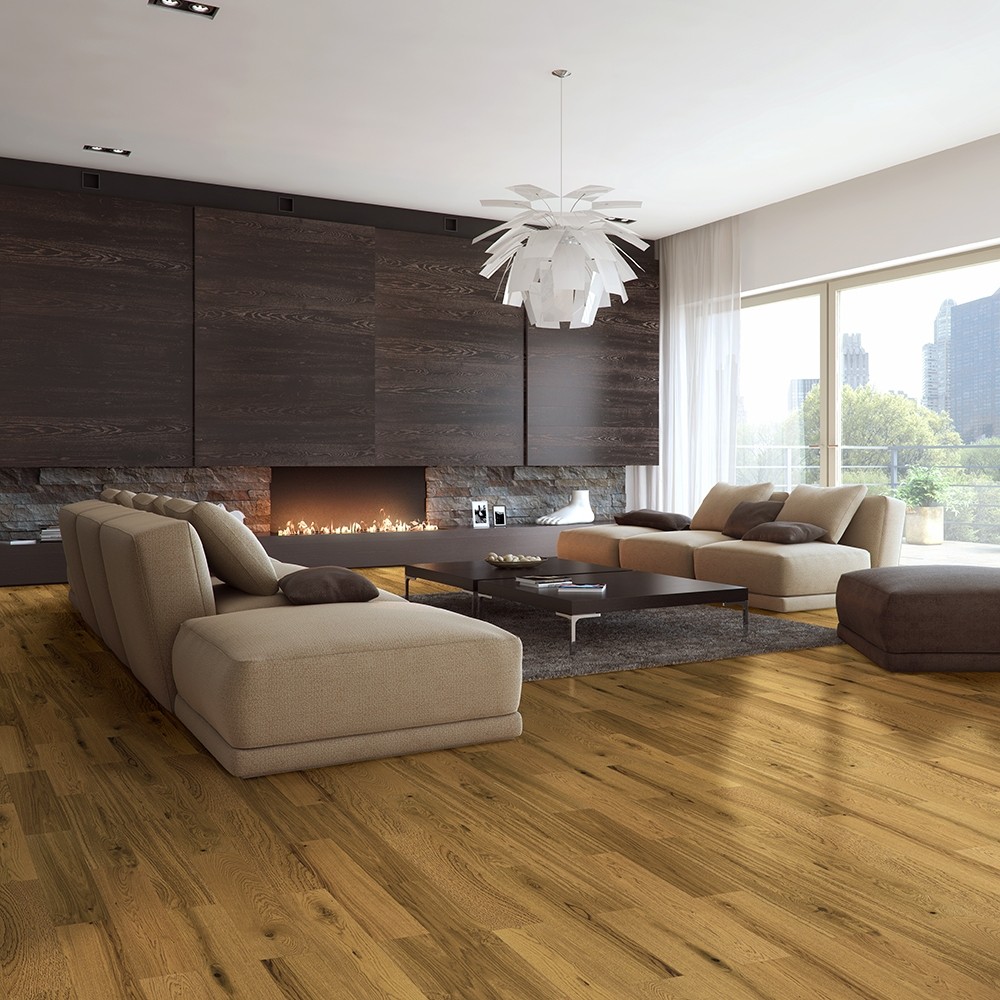
A common dilemma often occurs when looking for new flooring for your home– should I choose solid wood flooring or laminate? There are pros and cons for both options, however this article will help you to establish which is best for you, your lifestyle, your budget and your home.
Timelessly stylish, solid wood flooring has been a highly-desired flooring choice for decades. Full of character, with subtle tones and an authentic natural appearance, hardwood flooring adds a touch of elegance to any style of room, whether traditional, farmhouse, contemporary or even art deco.
Laminate flooring is considered to be a strong alternative to wood flooring and with vast improvements in the manufacturing process, laminate has become increasingly natural looking in appearance and is sold in a huge range of colours and styles. Plus, it sells at a fraction of the price!
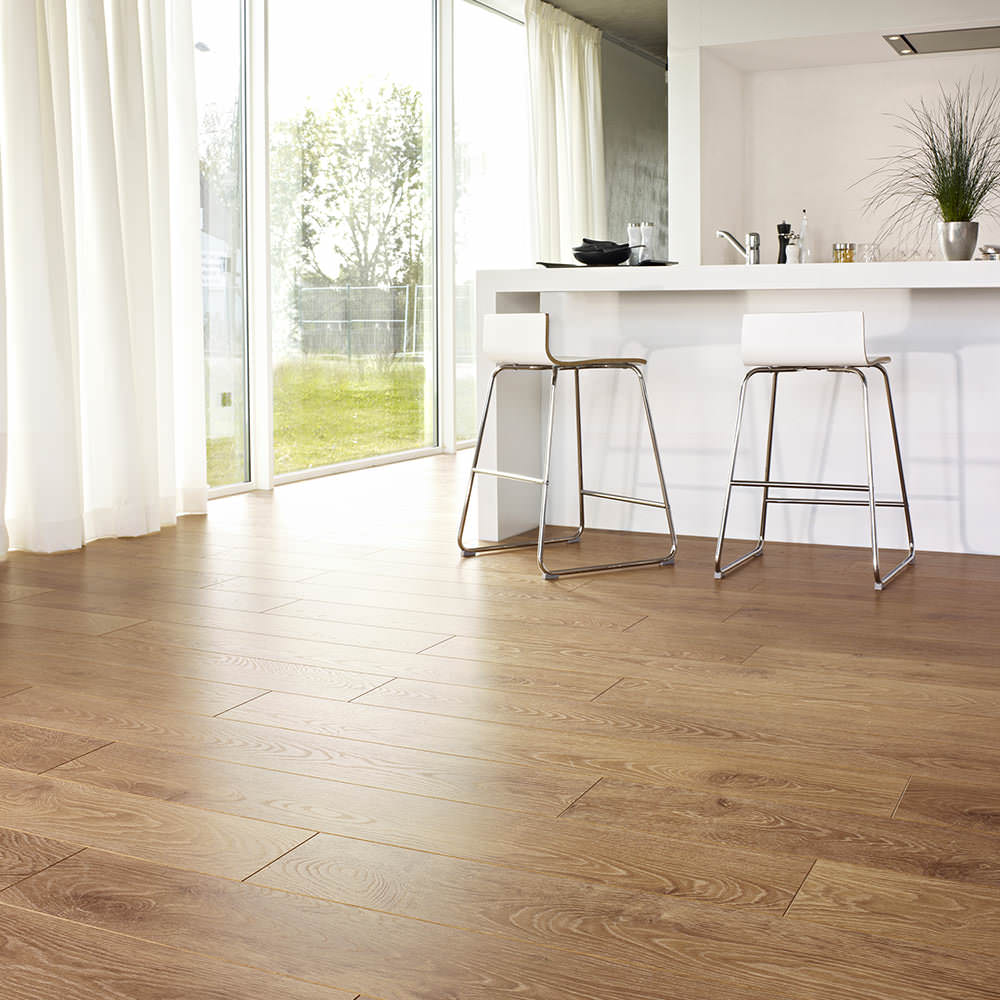
PRICE
The cost difference between solid wood flooring and laminate can be significant. It can therefore be a big influence on your choice.
Solid Wood
Made from harvested trees, the price of solid wood can vary and is dependent on:
- How exotic the trees are
- The grade of wood
- The size of the tree e.g. whether you want narrow or wide planks
- Wider planks can cost more due to the need to cut them from the centre of the tree. They're therefore less frequent.
- The thickness of the wood - the thicker the wood the longer it will last.
Irrespective of the above variances, the cost of solid wood is considerably higher to buy and to install than laminate.
Laminate
Using advanced photo technology, manufacturers enclose a photo image of a wood plank between a protective layer and high density backing layers.
The manufacturing process, combined with the cheaper materials, produces laminate for selling at a reduced price. Plus, with it's easy click fitting, the installation costs are also much lower.
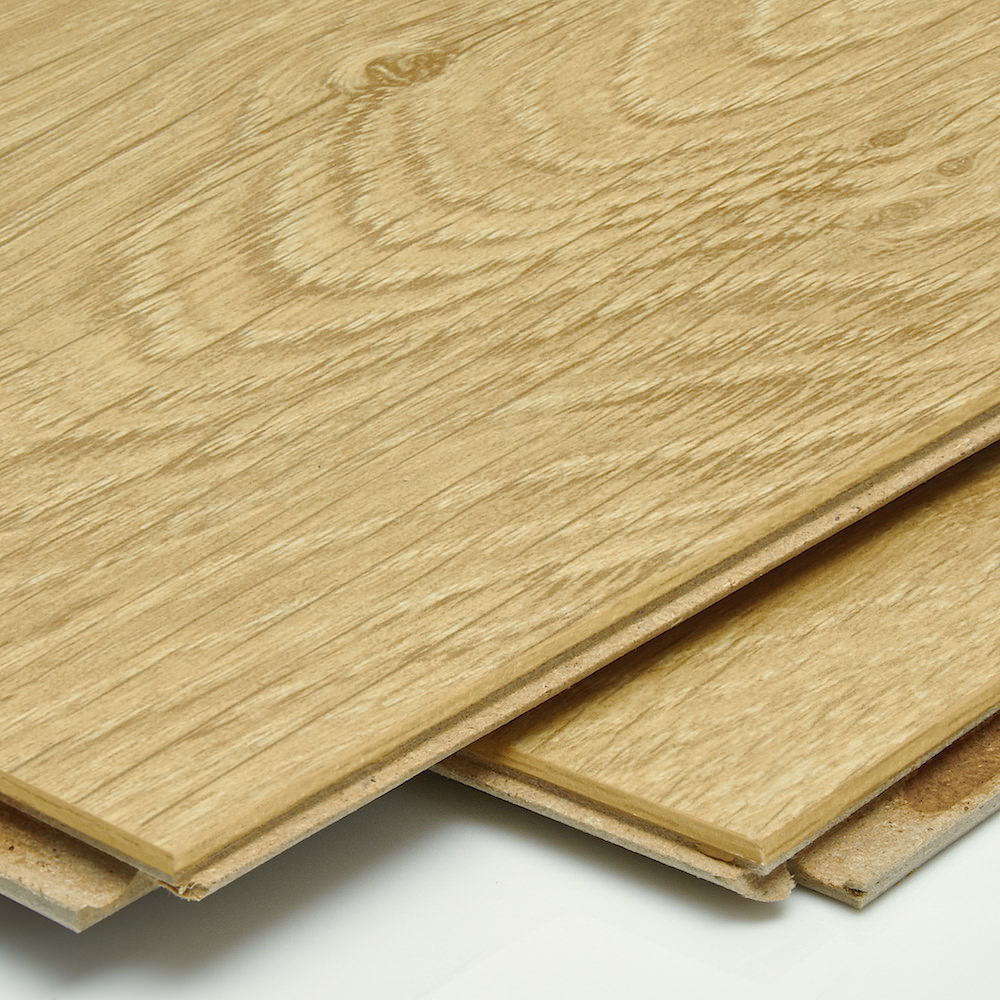 Laminate Flooring: Balterio Tradition Quattro - Lounge Oak
Laminate Flooring: Balterio Tradition Quattro - Lounge OakDURABILITY
An important factor to assess when choosing between solid wood flooring or laminate is the traffic load / the wear and tear the flooring will experience.
Solid Wood Flooring
Solid wood is relatively scratch resistant, however, sharp stones, sand or heavy furniture being dragged across the floor can cause scratches and the burden of heavy traffic can show wear and tear. Preventative measures can however be put in place, e.g. a front door mat to catch stones on entering, foam pads on the bottom of furniture legs and regular sweeping.
Saying this, Solid Wood’s hard wearing and durable nature and its ability to be sanded and re-finished means that wood flooring can last a lifetime and maintain its beauty year on year. Plus, its abundance of character and unique grainings camouflage most scratches.
Laminate Flooring
Laminate flooring is more durable and scratch resistant than wood flooring - although we do still recommend the use of foam pads underneath furniture legs. Its bottom layers are designed to resist moisture from the ground below to avoid warping or rising of the boards, and its hard-wearing top layers are highly resistant to scratches, increasing its durability. Nevertheless, once laminate begins to show wear and tear, sanding is ineffective. Whereas wood can be sanded and re-finished, the laminate will need to be replaced.
Wood's reactive nature to water makes laminate a preferential choice to families with young kids, prone to spilling their drinks across the floor however, as long as you clean and dry any spillages up straight away you can avoid damaging your wood floor!
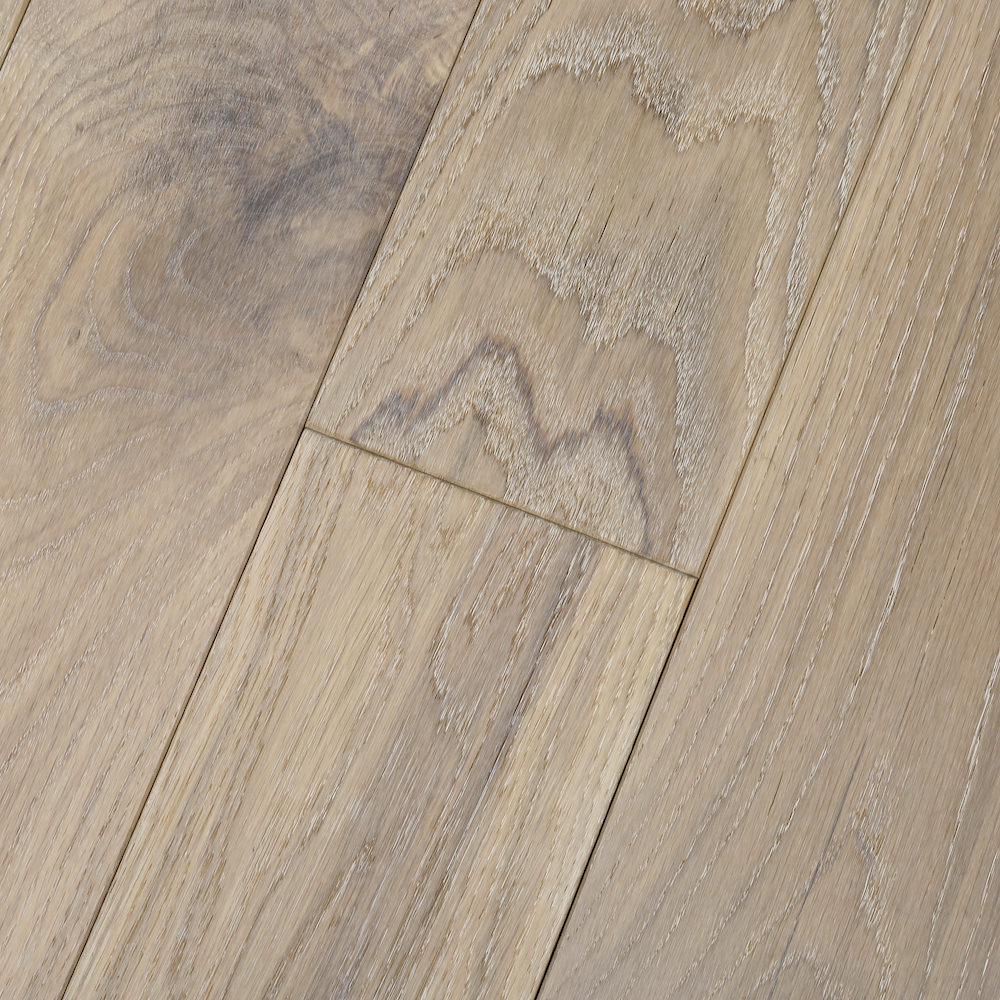 Solid Wood Flooring - Deluxe Frosted Oak
Solid Wood Flooring - Deluxe Frosted OakLOOK
One thing that can’t be argued with when choosing between solid wood flooring or laminate is the allurement & magnetism of a real solid wood flooring. Its stunning details, rich colours and natural grains embody beauty and compliment any style of decor seamlessly. Plus, it can add considerable value to your home.
Laminate, however, although it has become increasingly natural in appearance, cannot match the charm of a real wood floor.
An advantage of solid wood is its adaptability for re-finishing. It only requires sanding every 10 years or so! When you've sanded it, you can even opt to stain it a different colour. This is advantageous when suiting a new colour scheme or changing the finish.
With hardwood being a natural product the colour can age slightly over time due to sunlight and use however wood ages with beauty adding even more character to your floor. Laminate is manufactured with inbuilt UV protection, and is therefore more resistant to fading throughout its lifetime.
In this respect, when choosing between solid wood or laminate flooring, laminate is massively outshone by wood flooring. Although it is more durable, laminate is not as visually appealing; in particular the cheaper ranges which may have artificial-looking wood grain textures.
LOCATION
Due to its heat and moisture sensitivity hardwood is not suitable in areas of moisture such as kitchens and bathrooms. Spillages also need quick attention to avoid any water damage. Whilst solid wood flooring is not recommended in these rooms, laminate can be laid in a kitchen as it is not as sensitive, but take caution using laminate in a bathroom – only certain laminates are manufactured to deal with wet humid environments like the bathroom. If having the wood look in your bathroom is important to you, we would recommend the use of wood style LVT.
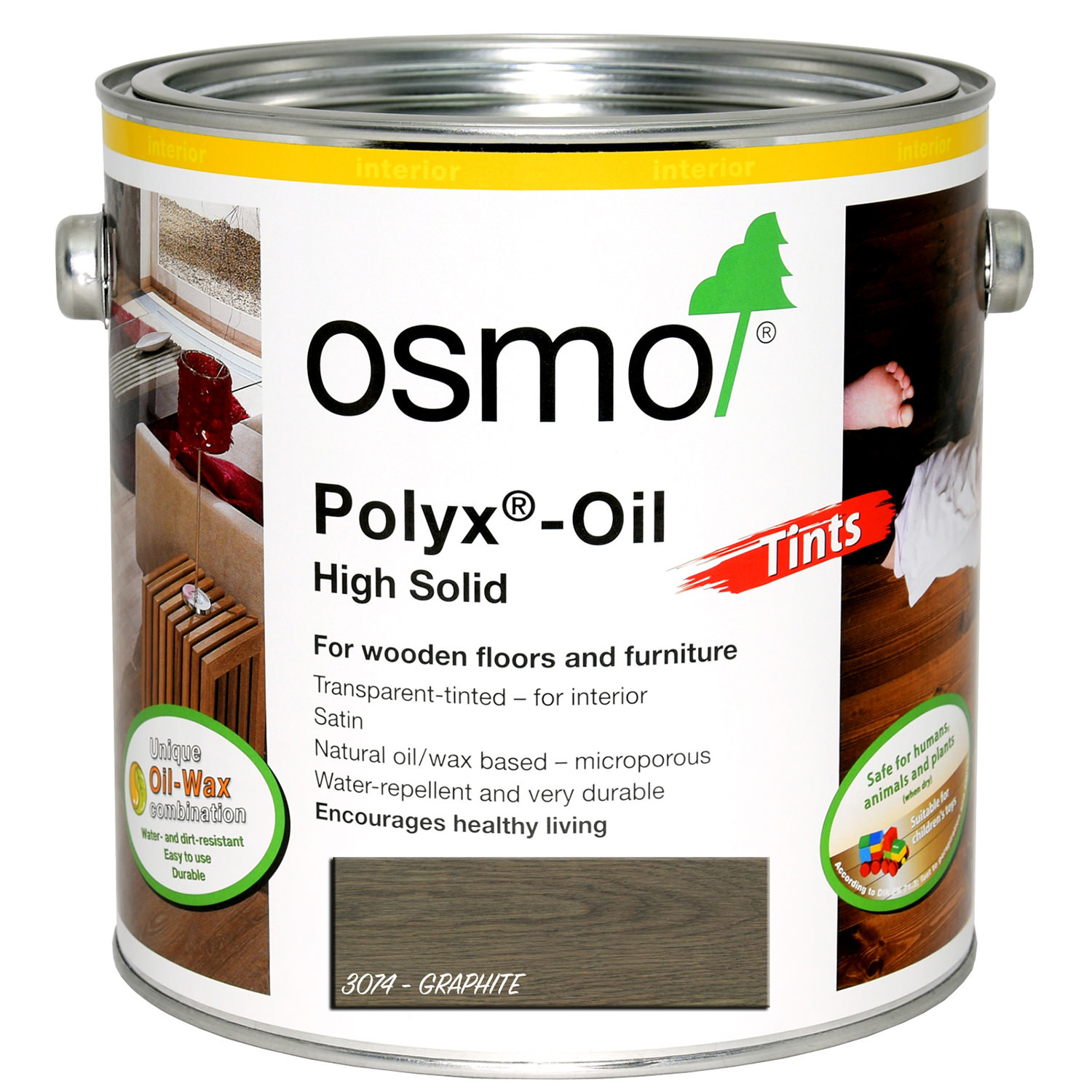
Osmo Oil for tinting and refinishing a solid wood floor
REPAIR
As flooring experiences lots of traffic on a daily basis, you will need to do some level of reparation. After a while, excessive wear and tear or minor accidents will damage its look.
Solid wood can be repaired by sanding the imperfections and refinishing (this is usually done around every 10 years) but be careful, depending on how your wood is finished you may lose the colour (if it was stained) when sanding and you can only sand a wood floor so many times, depending on its thickness.
Laminate is relatively easy to repair. If the laminate comes in individual pieces and snaps together, you may be able replace a board . However, you may still face an issue here as the new board may not exactly match. This can be due to age and sunlight changing your floor's colouring. Otherwise, if your laminate has become dull and worn, it may mean you need to replace the whole floor.
WHICH SHOULD YOU CHOOSE?
Although some argue laminate is more durable than solid wood, this is relative when you consider wood's longevity. Also consider how you can prevent excessive wear and tear with a few minor installments. Foam pads on the bottom of furniture and regular cleaning are good preventative measures to take.
The question to ask when choosing between solid wood flooring or laminate; do you sacrifice the grandeur of wood flooring for the price of laminate flooring and its scratch resistance?
Remember to be realistic about your circumstances. If you have a busy household with pets, kids and high traffic you may want to consider laminate. If you are likely to change your floor again, the cheaper option may be the way forward. Looking to improve your homes aesthetics, add warmth and add value to your home? Solid wood is the perfect choice for you!
Weigh up the pros and cons and decide what is right for you and your home.



